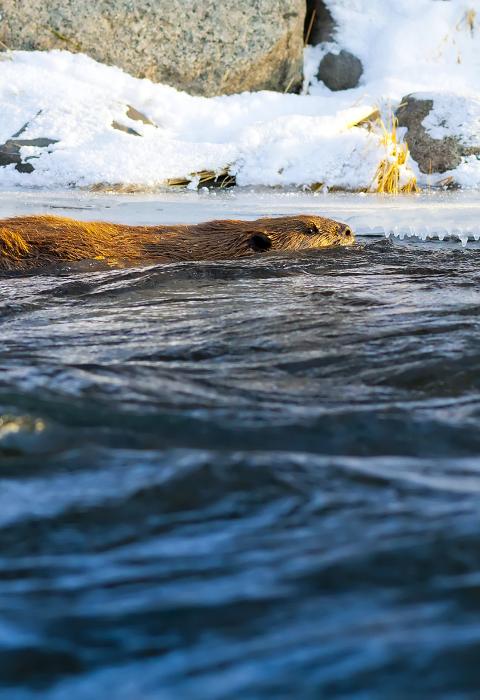East Branch Tahquamenon River
Michigan
The East Branch Tahquamenon River originates from Betchler Marsh and is a narrow, shallow river flowing through lowland conifer forest as it flows northward. Tag alder lines the riverbanks. Downstream, there is an abandoned railroad grade where the river widens to approximately 8 feet and 1-2 feet in depth. The river continues to flow northward through forests of balsam fir, aspen, and paper birch and under a wooden footbridge near the town of Eckerman. The shoreline is somewhat developed in the small communities of Eckerman and Strongs. However, beyond these communities, the river widens, deepens, and provides a relatively undisturbed, remote, and “wild” setting as the river flows to the national forest boundary.
The East Branch is a high-quality brook trout stream that rewards persistent anglers who overcome the dense alder along much of its length. Fall is a special time to visit the river when the vibrant colors of Michigan hardwoods are reflected in the dark, tannin-stained water.
Designated Reach
March 3, 1992. From its origin to the Hiawatha National Forest boundary.
Outstandingly Remarkable Values
Fish
Much of the East Branch of the Tahquamenon River is high-quality habitat for brook trout. Cold groundwater input, abundant cover, and deep pools give capability to produce large numbers of fast-growing brook trout. Sand is the primary substrate type, and gravel suitable for trout spawning occurs in the upper river segments. The river is managed by the state as a wild trout fishery with special regulations that promote natural reproduction and survival to large size. Much of the riparian area is heavily forested, providing good protection for numerous small tributaries and spring seeps that maintain cold water temperatures in the river.
Hydrology
The East Branch of the Tahquamenon River hosts the origin of the greater Tahquamenon River System. As the headwaters for the Tahquamenon River, the East Branch is hydrologically significant in itself. In addition, the river’s water clarity, cold temperatures, and high pH support regionally unique life forms. The combination of water temperature, pH, hydro-geologic source, source origin, and productivity of the stream, make the East Branch regionally outstandingly remarkable.

